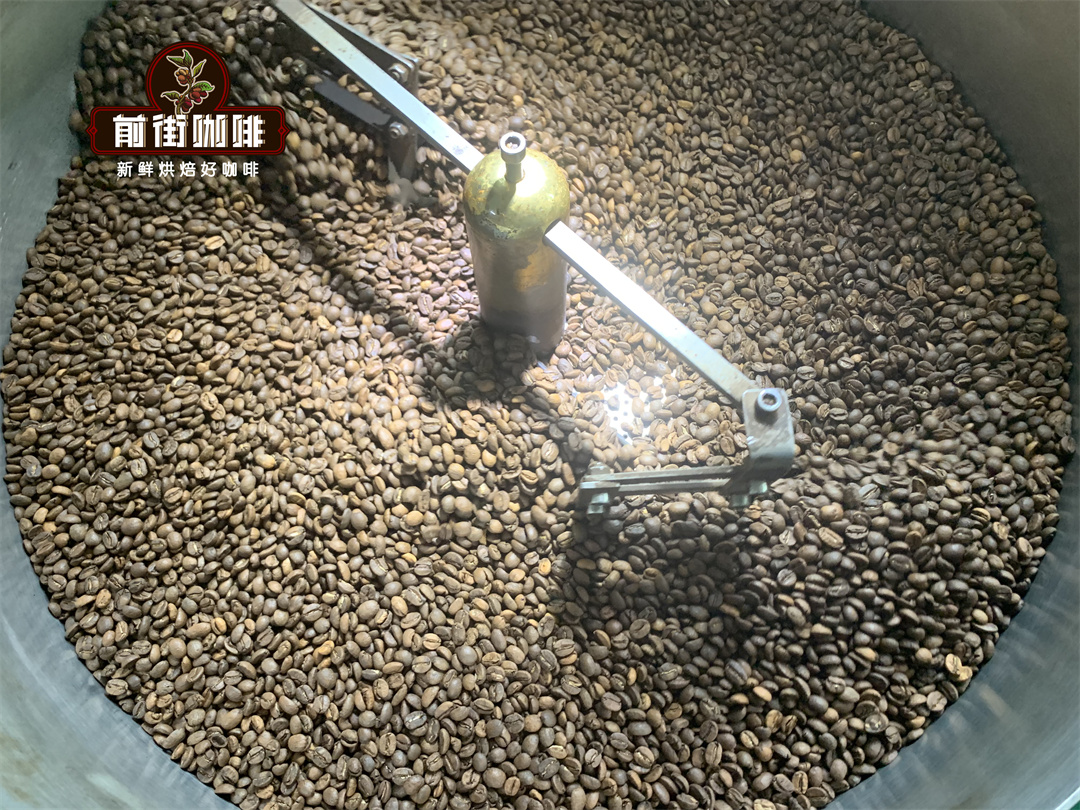Why is coffee sour and bitter? where does coffee come from? what determines the bitterness and sour of coffee?
For the impression of coffee, many people stay between sour and bitter. In fact, sour and bitter are basically the basic components of coffee. For today's boutique hand-brewed coffee, without sour and bitter, you can't bring out so many flavors of coffee, such as the mellow Blue Mountain Coffee of Qianjie Coffee and the excellent citrus blossom-scented Rose Summer Coffee. They may be sour or bitter, but they don't take away the dominant position of your taste buds, but balance all of them.
The taste of coffee is generally made up of bitter and sour tastes, but where do these tastes come from? In addition, why does the balance of bitterness and sour taste change with baking? Qianjie Coffee thinks that if you know why, coffee will become more interesting.
The deeper the baking, the stronger the bitterness
When it comes to the taste of coffee, many people will first think of the unique bitterness of coffee. Most people think that the bitterness of coffee comes from caffeine, but from the comparison of all the ingredients of coffee beans, the content of caffeine is actually very low. As for the bitterness of coffee, it is mainly due to ingredients other than caffeine. The dried raw beans are mainly composed of polysaccharides (weaves that form plant skeletons, etc.). In addition, it also contains proteins, lipids, sugars (sweet sucrose, etc.), chlorogenic acid, malic acid, citric acid, guainic acid and other acids as well as caffeine.
After baking, coffee beans will appear brown, mainly because sugar, chlorogenic acid and amino acids produce brown pigment, and brown pigment is also one of the bitter elements.
Brown pigments can generally be distinguished by size, and the larger the molecule, the stronger the bitterness. Shallow roasted coffee beans contain many small molecular pigments, while macromolecular pigments tend to increase with the deepening of the baking degree. In other words, the deeper the baking degree, the stronger the bitterness is affected by the change of pigment.

The main ingredient of sour coffee is guainic acid.
The sour taste felt when drinking coffee is not the acidic components such as malic acid or citric acid in raw beans, but mainly due to the newly formed acid caused by the chemical reaction caused by baking and heating. It mainly comes from the guainic acid produced after the decomposition of chlorogenic acid, which has a significant effect on enhancing the sour taste, in addition, there are a lot of acetic acid and phosphoric acid.
Even if the raw beans have not yet reached the level of shallow baking, even at a fairly shallow stage, the total amount of acid (especially guainic acid) will continue to increase. When the temperature begins to rise further, thermal decomposition begins, and as the baking degree deepens, the amount of acid decreases gradually. It is also for this reason that the deeper the degree of baking, the sour taste will weaken.
The content of sugar and chlorogenic acid in raw beans will vary according to the differences between native species such as Arabica and Ghanaian Fra, and even the planting environment, and this difference will also affect the personality of coffee beans.
Important Notice :
前街咖啡 FrontStreet Coffee has moved to new addredd:
FrontStreet Coffee Address: 315,Donghua East Road,GuangZhou
Tel:020 38364473
- Prev

What is the process of making coffee beans? what coffee beans grow in what coffee belt?
A cup of coffee alone contains an esoteric story. Do you know how coffee grows into the cup? How coffee beans are made, in fact, is to remove the peel, pulp, endocarp, silver skin and other parts of the fruit, you can get raw coffee beans, and start the output operation. It takes about three years for coffee to be planted and harvested from the beginning, but from the beginning to the beginning.
- Next

Is the coffee good or concentrated? what are the requirements for the quality of the coffee?
What do you think of when you want to drink healthy, flavored, fast and convenient coffee, take-out coffee? Or instant coffee, wrong, come to Qianjie coffee to tell you in detail, yes, it is Qianjie today to share convenient and fast hanging-ear coffee. You don't need a professional coffee maker, you don't need complicated operations, and you don't have to go to the coffee shop, just cups and hot water. Less than 60
Related
- What brand of black coffee is the most authentic and delicious? what are the characteristics of the flavor of the authentic Rose Summer Black Coffee?
- Introduction to the principle and characteristics of the correct use of mocha pot A detailed course of mocha pot brewing coffee is described in five steps.
- Which is better, decaf or regular coffee? how is decaf made?
- How much is a bag of four cat coffee?
- How about four Cat Coffee or Nestle Coffee? why is it a cheap scam?
- Which is better, Yunnan four Cats Coffee or Nestle Coffee? How about cat coffee? is it a fake scam? why is it so cheap?
- How about Cat Coffee? what grade is a hoax? which instant coffee tastes better, four Cat Coffee, Nestle Coffee or G7 coffee?
- Process flow chart of coffee making-Starbucks coffee making process what coffee tastes good at Starbucks
- The top ten best coffee beans in the world Rose summer coffee or Tanzanian coffee tastes good
- Yunnan four cat coffee is good to drink?_four cat coffee is a big brand? four cat blue mountain coffee is fake?

